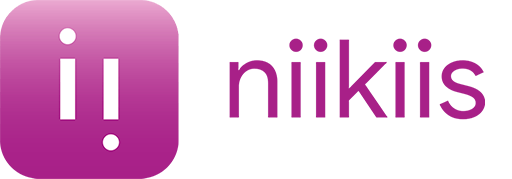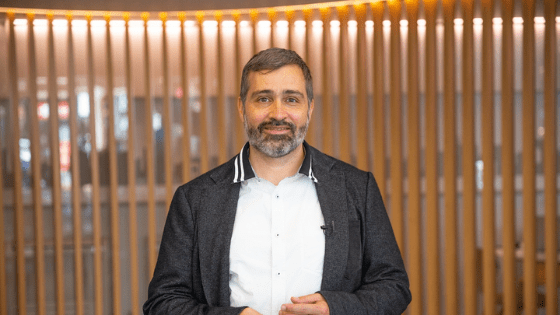We interviewed Juan Antonio Gómez, agile expert and author of the book 66 ideas to be Agile in HR.
Juan Antonio, welcome to the niikiis blog:
We would like to start by asking you who you are.
I am the "odd" Telecoms engineer. I realised very early on that in order to achieve the objectives in the teams, it is not enough to have expert people and work hard. You need people who collaborate, cooperate, are motivated, have focus and are given vision. You need to manage the work environment so that people can deliver 100%.
At a certain point in my professional life I decided to leave the "dark side" of the organisation (development, R&D, business and sales) and move to the light side (talent management, HR and people management) to put people and their interactions first and foremost. When you do this the natural consequence is that people develop, projects succeed, products and services are delivered on time, the company adds value and money flows. In this order.
What does HR agility mean?
HR agility means stopping doing some of the things we have been doing "forever" and starting to do others that transform how we organise ourselves, how we prioritise and how we deliver value to the business, employees and stakeholders.
From my point of view, I could summarise the meaning of agility in people management with the following points:
- Shift from focusing on processes to focus on what our people need to be more agile.
- Stop telling others what to do, and start being exemplary in what we want them to do.
- Start applying other types of agile practices, tools, frameworks and methodologies that foster efficiency, value creation, motivation and commitment.
- Transform our mindset to de-bias the traditional, predictive and productive way of working, so that we can activate all that the world of agility has to offer.
How has the need for an HR department to be agile changed over the last few years? Why?
To begin with, this need is not just for HR, but for any area of the company that is immersed in or subject to a changing, uncertain, complex and/or ambiguous environment.
Agile practices were designed and validated to work more effectively and efficiently than traditional practices in this type of environment. In short, if you want more and better HR results and your organisation is in a time of change or complexity, agile will deliver better results than what you are doing now.
The issue is that in the case of HR there is an extra point: If HR does not accompany the agileisation of the rest of the company, the agile transformation at the enterprise level will most likely fail. We are a key player but we may not know it yet.
How to start implementing agility in the department?
The recommendation is always to start with something simple, with a first step that brings you closer to becoming more agile. The difficulty with agility (as opposed to the more classic HR or management tools) is that there are no recipes.
Each department should be able to learn about and experiment with various agile practices to see which works best and provides the most value.
Some start with technical agility by implementing a tool or framework such as Personal Kanban, and some start with agile practices such as daily meetings or retrospective meetings; and some start with agile organisational agility practices such as recognition, delegation of decisions, motivation with Moving Motivators from Management 3.0, prioritisation with "MoSCoW", or "TimeBoxing" in meetings.
What benefits does agility bring to the talent area?
More motivated people who have an interest and desire to develop their talents, people who know themselves better to know what skill, talent or competence they should develop and improve, and people with a greater capacity to learn.
What are the consequences of not promoting HR agility?
To begin with, living with the consequences of working with a predictive mindset and tools when the world is volatile and complex. These consequences are priority problems, to be simplified and unsustainable. Here are some questions to ask yourself:
- Are you confident that everything you do adds value?
- Do people in your organisation perceive and recognise that value?
- Are the people in your organisation motivated, committed and focused?
- Are you motivated?
- Will you be able to keep up your current pace of work until you retire?
On the other hand, if you in HR do not promote agility, do not live it, do not understand it and do not feel it, then you cannot be agile and therefore you cannot accompany the rest of the organisation to be agile. In agile there is a big gap between doing agile (following agile practices such as Scrum or Kanban) and being agile (following agile practices and doing so in coherence with agile values and principles).
What kind of companies are implementing agility in the people department?
Over the last 2 years I have accompanied medium, large and multinational companies in the industrial, technology, food, services, automotive, banking, retail, logistics, hospitality, pharma and entertainmentsectors.
Interestingly, I have not had the opportunity to accompany HR teams in software development or IT companies that might seem like they should be the ones implementing it.
Thank you very much.


 Employee database
Employee database  Documents and e-signature
Documents and e-signature  Reporting and analytics
Reporting and analytics  Payroll and incidents
Payroll and incidents  Time and Attendance Software
Time and Attendance Software  Shifts and task list
Shifts and task list  Absences & time-off
Absences & time-off  Workflows
Workflows  Expense management
Expense management  Recruitment and selection software
Recruitment and selection software  Onboarding
Onboarding  Training and procedures
Training and procedures  Internal communication
Internal communication  Performance assessment software
Performance assessment software  HR surveys and forms
HR surveys and forms  Chatbot
Chatbot 